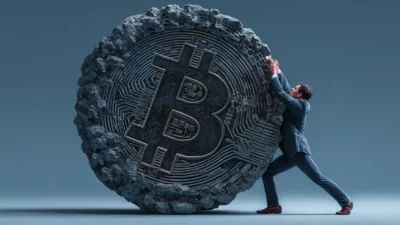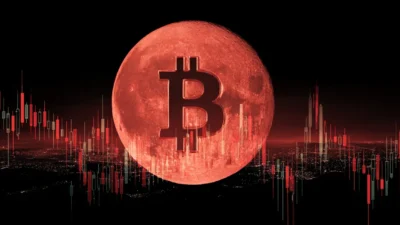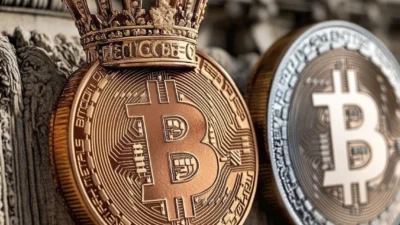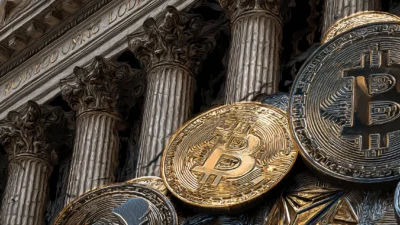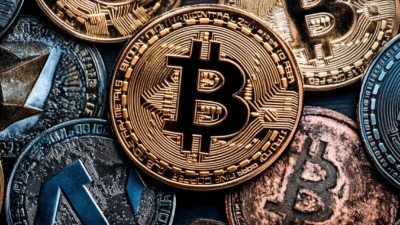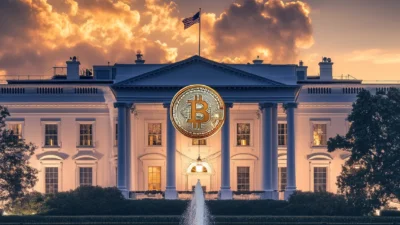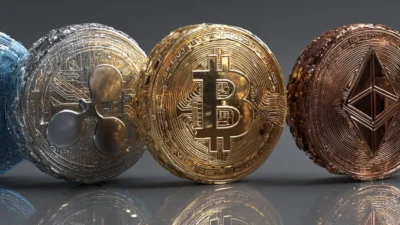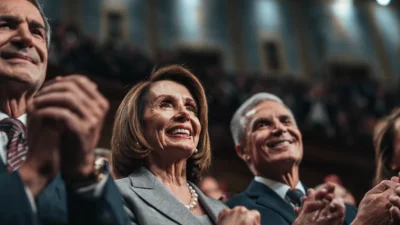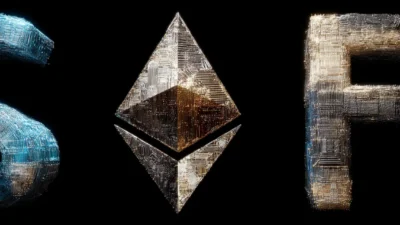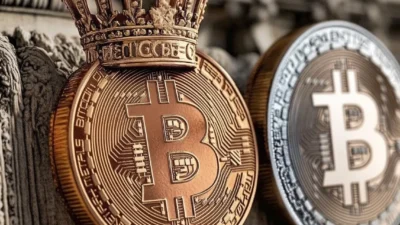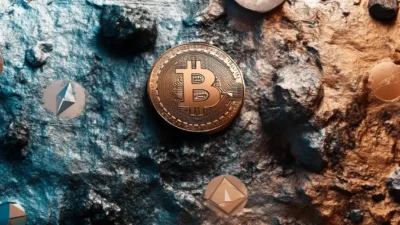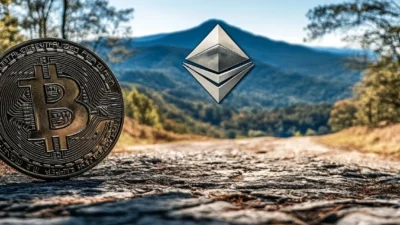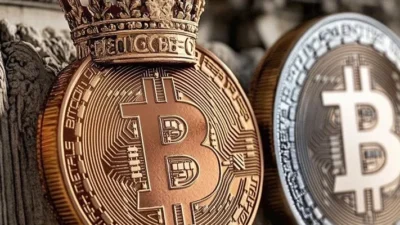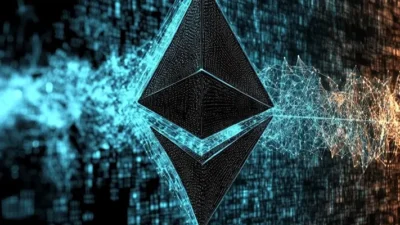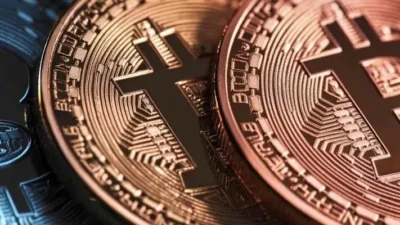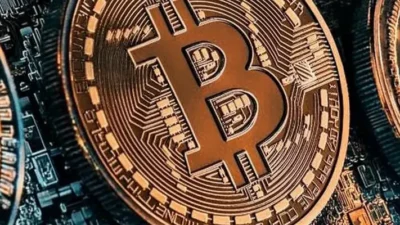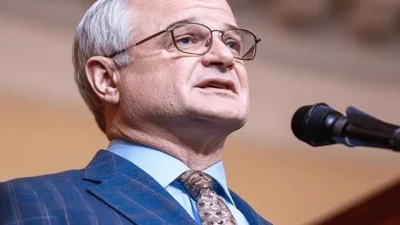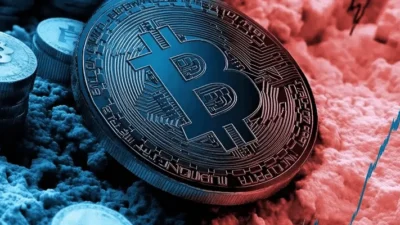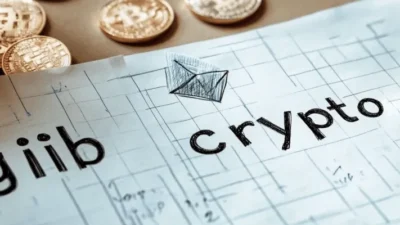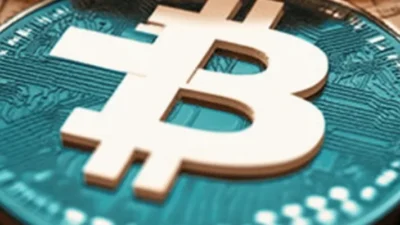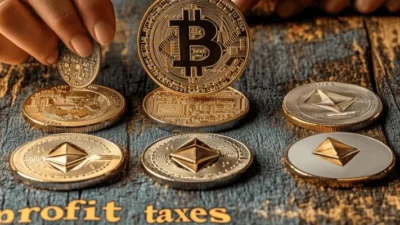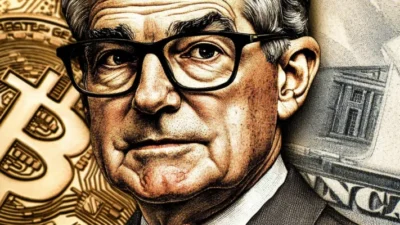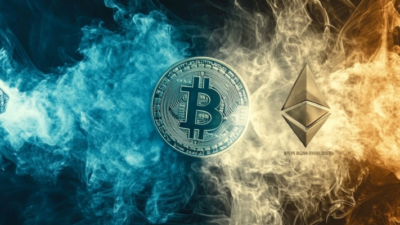TLDR
- A recent tweet from an analyst on X is getting attention from major crypto outlets.
- The analyst uses premium tools. Dypto Crypto was unable to verify the numbers.
- Users should be cautious about giving influencers the benefit of the doubt and always do their own research.
- BUT. If he’s right, here’s what it means…
If you’ve been keeping an eye on investment circles, you’ve probably heard some whispers that BlackRock’s Bitcoin ETF (IBIT) is now raking in more fees than its S&P 500-based ETF (IVV).
The rumor started circulating recently, sparked by a tweet from analyst Nate Geraci. It’s an exciting claim, but is it accurate? Honestly, we’re not so sure. Here’s why.
Time to get after it.
IBIT and IVV Explained
For context, IBIT is BlackRock’s Bitcoin ETF, while IVV is their ETF that tracks the S&P 500 index. Both are index-tracking Exchange-Traded Funds (ETFs), but they cater to very different markets.
While IVV has been a go-to for traditional investors for years, IBIT has gained attention as a historic launch in the crypto ETF space.
At first glance, Geraci’s claim that IBIT generates $186 million in fees annually compared to IVV’s $183 million seems to crown IBIT as BlackRock’s champion ETF for fee revenue. But whether IBIT has definitively surpassed IVV in this category remains up for debate.
Geraci’s report claims that IBIT’s trading fee revenue overtakes IVV due to its higher fee percentage and significant trading volumes. His calculations have made waves in the investment world, pointing out that IBIT’s AUM has grown at speed, spurring what one could call “crypto fever.” Articles referencing these figures have been posted on every major crypto outlet.
However, there’s a catch. Actually, there are a few. We’ll get to those below. But first. Fees.
What Are ETF Fees, and Why Do They Matter?
ETF fees are the cost of owning an ETF. They are usually expressed as the expense ratio, a percentage of your total investment. These fees cover costs like fund management and operations.
Here’s why they’re important:
- High Fees Can Eat Into Your Returns: Over time, even a small increase in fees can snowball, reducing your overall investment gains.
- Low Fees Mean Efficiency: ETFs with lower fees often indicate more efficient management or economies of scale.
When comparing IBIT (with an expense ratio of 0.25%) and IVV (at a mere 0.03%), you can see how the fees differ drastically despite their respective sizes.
IVV is a giant in the ETF world, with $609 billion in assets under management (AUM), while IBIT is a newer and smaller player with $75 billion in AUM. We pulled this information from Robinhood, but users can also find the same information on the BlackRock website.
Problems with the Information
You guys know we like to do our research. When we attempted to verify his claims, we encountered some issues.
1. The Data Source is Unverifiable
Geraci bases his findings on Bespoke Invest, a premium tool that many retail investors can’t access. Without the ability to verify his exact calculations independently, we’re left taking his word for it. That’s a problem.
Especially in journalism…
For retail users, the lack of accessible transparency is frustrating when trying to make informed decisions about where to invest their money.
For you, the average investor, this means:
- You have no way to confirm the data unless you pay for Bespoke Invest.
- You’re relying heavily on Geraci being 100% correct with no room for error.
And let’s be real, when it comes to investments, blind trust isn’t exactly the wisest strategy.
2. The Language in BlackRock’s Documents is Confusing
Geraci’s claims rely on details found in BlackRock’s own documentation, which, to put it mildly, isn’t easy to understand. Here’s an excerpt that might make your head spin:
“BlackRock will waive a portion of the Sponsor’s Fee for the first 12 months commencing on January 11, 2024, so that the fee will be .12% of the net asset value of the Trust for the first $5 billion of the Trust’s assets. If the fund exceeds $5 billion of the Trust’s assets prior to the end of the 12-month period, the Sponsor’s Fee charged on assets over $5 billion will be .25%.”
What does this mean for investors?
- The fee structure changes based on AUM thresholds and timelines, making it hard to calculate what you’re truly paying.
- The “weighted average” of fees further complicates things for anyone without a calculator and a solid understanding of investments.
The takeaway? Even with BlackRock’s supposedly “transparent” fee structure, there’s a lot that isn’t clear.
Not that it really matters, though. IBIT hit $10 billion in its first seven weeks after launch.
The reason it matters to us is that we’re trying to determine how long BlackRock has been charging the full fee. We wanted to get our math on. Now we can’t.
Full disclosure: anything math-related that we post would be inaccurate. We’re degenerate crypto users. Not mathematicians…
Why Crypto Users Should Be Careful About Social Media Analysts
This brings us to one of the most important lessons investors (especially those involved in crypto) can learn here: be skeptical of what you read online.
Social media analysts like Nate Geraci might have great insights and access to premium data, but their interpretations are just that — interpretations.
Investing based on a tweet alone could leave you vulnerable to misinformation or oversights. Always do your own research and cross-check claims using multiple sources.
But If He’s Right, Here’s What It Means…
If Geraci’s claim is accurate, IBIT would show us two crucial shifts in the investment landscape:
- Crypto Is Becoming Mainstream: The fact that a Bitcoin ETF could potentially outperform the S&P 500 in revenue underscores that crypto is no longer a fringe investment. Even conservative investors are beginning to explore digital assets.
- AUM Isn’t Everything: IVV has a significantly larger AUM than IBIT, but its lower fees result in lower overall revenue. This highlights how traditional metrics, such as size, don’t always indicate profitability in the ETF world.
- IBIT’s Fees Are Too Damn High: Ok. This one is our personal opinion…
For crypto users, this could mean more major players entering the space, offering even more crypto-focused ETFs. But tread carefully; high growth often comes with high risk.
What We Want Users to Take From This Article
Here’s the bottom line:
- We can’t say for certain that IBIT generates more fee revenue than IVV. The data is incomplete and hard to verify.
- BlackRock’s fee structure for IBIT is anything but straightforward, so approach with caution if you’re considering an investment.
- Relying solely on social media for investment advice is risky. Cross-check everything and avoid making decisions based on a single source.
If you’re new to the investment world, especially crypto ETFs, focus on understanding the basics before getting caught up in headline-grabbing claims. A good place to start? Learn how ETFs work, compare fees, and always ask, “Does this align with my financial goals?”
One thing users can rely on? Honest reporting from Dypto Crypto. Make sure to check back regularly for unbiased news reports.






